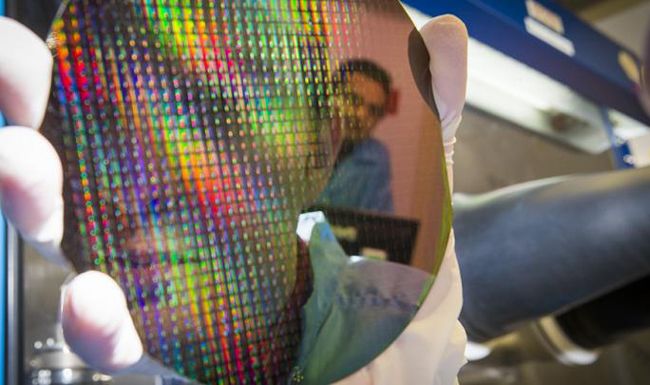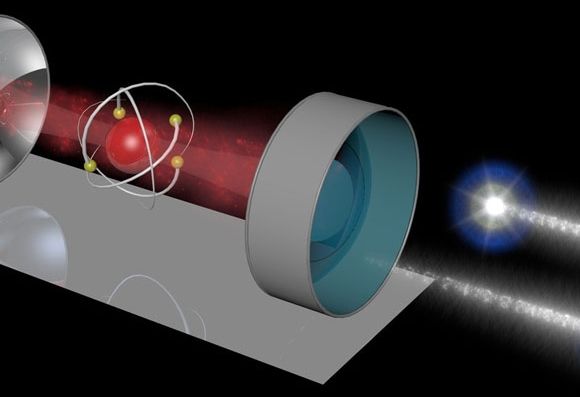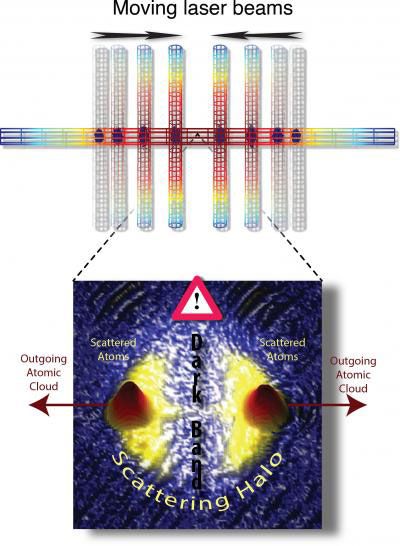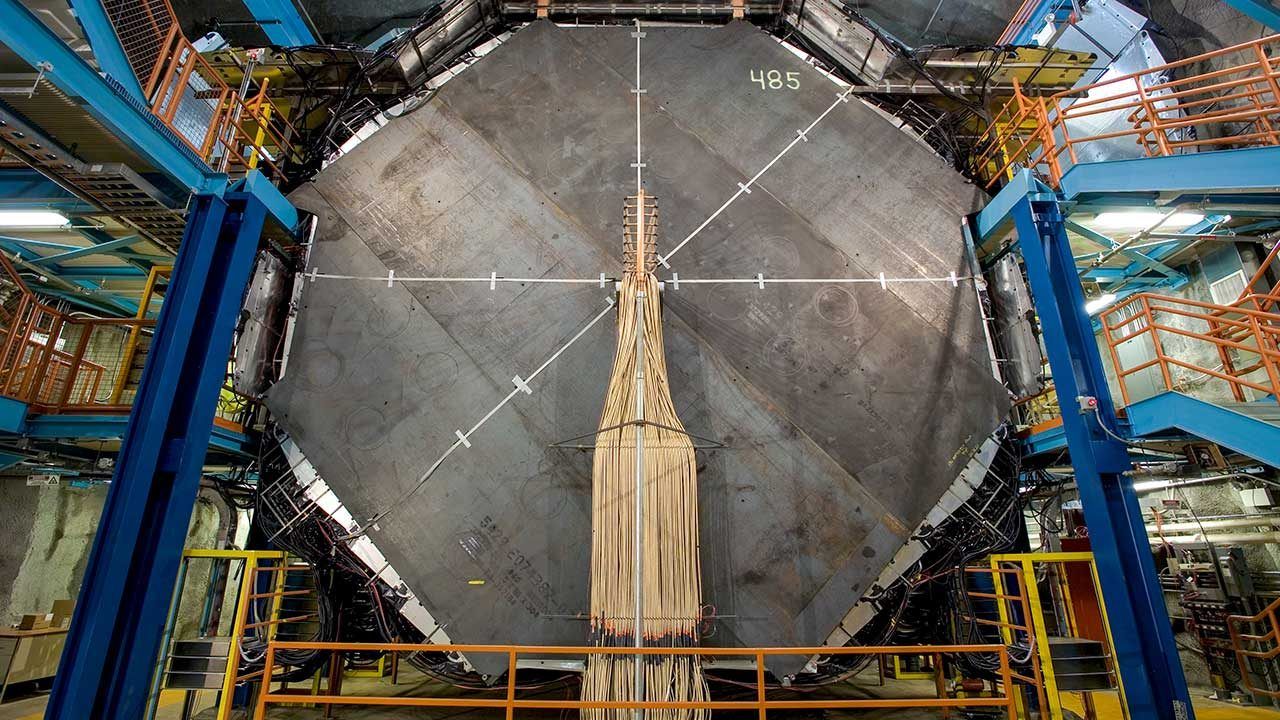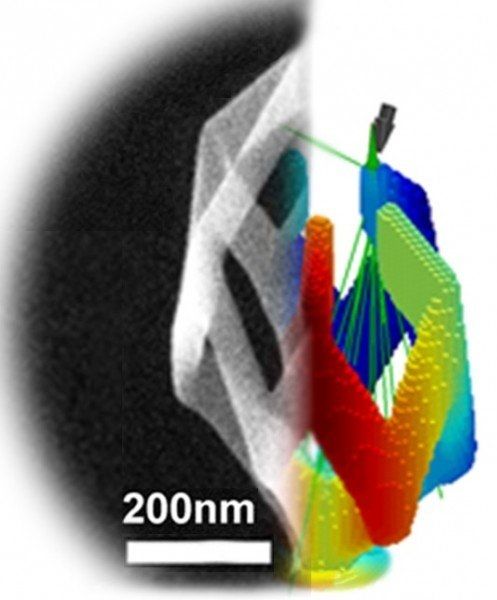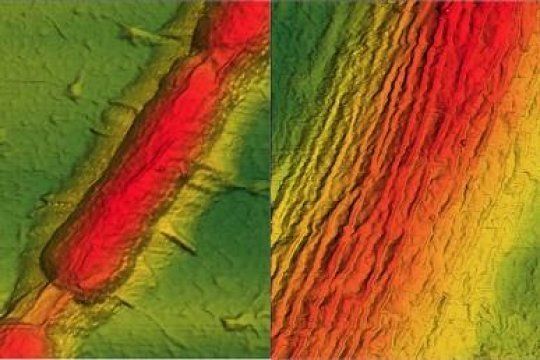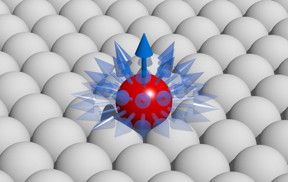Archive for the ‘particle physics’ category: Page 531
Jul 13, 2016
Researchers Develop A Universal Quantum Gate
Posted by Karen Hurst in categories: computing, particle physics, quantum physics
The universal quantum gate to enable long distance communications with QC without degradation.
Scientists have now developed a universal quantum gate, which could become the key component in a quantum computer.
Light particles completely ignore each other. In order that these particles can nevertheless switch each other when processing quantum information, researchers at the Max Planck Institute of Quantum Optics in Garching have now developed a universal quantum gate. Quantum gates are essential elements of a quantum computer. Switching them with photons, i.e. light particles, would have practical advantages over operating them with other carriers of quantum information.
Continue reading “Researchers Develop A Universal Quantum Gate” »
Jul 13, 2016
Physicists collide ultracold atoms to observe key quantum principle
Posted by Karen Hurst in categories: particle physics, quantum physics
Physicists from New Zealand’s University of Otago have used steerable ‘optical tweezers’ to split minute clouds of ultracold atoms and slowly smash them together to directly observe a key theoretical principle of quantum mechanics.
The principle, known as Pauli Exclusion, places fundamental constraints on the behavior of groups of identical particles and underpins the structure and stability of atoms as well as the mechanical, electrical, magnetic and chemical properties of almost all materials.
Otago Physics researcher Associate Professor Niels Kjærgaard led the research, which is newly published in the prestigious journal Nature Communications (“Multiple scattering dynamics of fermions at an isolated p-wave resonance”).
Continue reading “Physicists collide ultracold atoms to observe key quantum principle” »
Jul 13, 2016
Collapse: Has quantum theory’s greatest mystery been solved?
Posted by Sean Brazell in categories: particle physics, quantum physics
Our best theory of reality says things only become real when we look at them. Understanding how the universe came to be requires a better explanation.
By Jon Cartwright
WHERE, when you aren’t looking at it, is a subatomic particle? A quantum physicist would probably answer: sort of all over the place. An unobserved particle is a wisp of reality, a shimmer of existence – there isn’t a good metaphor for it, because it is vague both by definition and by nature. Until you do have a peek. Then it becomes a particle proper, it can be put into words, it is a thing with a place.
Continue reading “Collapse: Has quantum theory’s greatest mystery been solved?” »
Jul 12, 2016
Massive neutrino experiment undermines our sense of reality
Posted by Karen Hurst in category: particle physics
Jul 12, 2016
Missouri S&T physicist works to predict atom movement
Posted by Karen Hurst in categories: particle physics, quantum physics
By laser-cooling atom clusters and studying their movements, a Missouri University of Science and Technology researcher hopes to better understand how atoms and their components are impacted and directed by environmental factors.
With a $400,000 grant from the National Science Foundation, Dr. Daniel Fischer, assistant professor of physics at Missouri S&T, tests the limits of quantum mechanics through his project titled “Control and Analysis of Atomic Few-Body Dynamics.”
In a hand-built vacuum chamber, Fischer manipulates lithium atoms by trapping them in a magnetic field and then shooting them with different lasers. This gives Fischer a large variety of initial states to test. Tests range from single, polarized atoms to larger groups that are laser-cooled to a consistent energy level. By doing so, Fischer works to help unravel the “few-body problem” that continues to confound the world of physics.
Jul 12, 2016
Additive manufacturing techniques featuring atomic precision could one day create materials with Legos flexibility and Terminator toughness
Posted by Karen Hurst in categories: chemistry, particle physics, transportation
Great work by my friends at ORNL.
In a review paper published in ACS Nano, Olga Ovchinnikova and colleagues provide an overview of existing paths to 3D materials, but the ultimate goal is to create and customize material at the atomic scale. Material would be assembled atom by atom, much like children can use Legos to build a car or castle brick by brick. This concept, known as directed matter, could lead to virtually perfect materials and products because many limitations of conventional manufacturing techniques would be eliminated.
“Being able to assemble matter atom by atom in 3D will enable us to design materials that are stronger and lighter, more robust in extreme environments and provide economical solutions for energy, chemistry and informatics,” Ovchinnikova said.
Jul 11, 2016
Germs add ripples to make ‘groovy’ graphene
Posted by Karen Hurst in categories: biotech/medical, computing, engineering, nanotechnology, particle physics
Graphene, a two-dimensional wonder-material composed of a single layer of carbon atoms linked in a hexagonal chicken-wire pattern, has attracted intense interest for its phenomenal ability to conduct electricity. Now University of Illinois at Chicago researchers have used rod-shaped bacteria — precisely aligned in an electric field, then vacuum-shrunk under a graphene sheet — to introduce nanoscale ripples in the material, causing it to conduct electrons differently in perpendicular directions.
The resulting material, sort of a graphene nano-corduroy, can be applied to a silicon chip and may add to graphene’s almost limitless potential in electronics and nanotechnology. The finding is reported in the journal ACS Nano.
“The current across the graphene wrinkles is less than the current along them,” says Vikas Berry, associate professor and interim head of chemical engineering at UIC, who led the research.
Jul 11, 2016
Atomic bits despite zero-point energy? Jülich scientists explore novel ways of developing stable nanomagnets
Posted by Karen Hurst in categories: computing, mobile phones, nanotechnology, particle physics, quantum physics
Stable nanomagnets that ultimately improves data storage on the smallest of devices.
Abstract: So-called “zero-point energy” is a term familiar to some cinema lovers or series fans; in the fictional world of animated films such as “The Incredibles” or the TV series “Stargate Atlantis”, it denotes a powerful and virtually inexhaustible energy source. Whether it could ever be used as such is arguable. Scientists at Jülich have now found out that it plays an important role in the stability of nanomagnets. These are of great technical interest for the magnetic storage of data, but so far have never been sufficiently stable. Researchers are now pointing the way to making it possible to produce nanomagnets with low zero-point energy and thus a higher degree of stability (Nano Letters, DOI: 10.1021/acs.nanolett.6b01344).
Since the 1970s, the number of components in computer chips has doubled every one to two years, their size diminishing. This development has made the production of small, powerful computers such as smart phones possible for the first time. In the meantime, many components are only about as big as a virus and the miniaturization process has slowed down. This is because below approximately a nanometre, a billionth of a meter in size, quantum effects come into play. They make it harder, for example, to stabilise magnetic moments. Researchers worldwide are looking for suitable materials for magnetically stable nanomagnets so that data can be stored safely in the smallest of spaces.
Jul 8, 2016
Scientists obtain evidence of many-body localization in a closed quantum system
Posted by Karen Hurst in categories: computing, particle physics, quantum physics
Finding evidence of many-body localization in a closed quantum system.
During equilibration ordinary many-body systems lose all information about the initial state. Every morning we experience an example for this behaviour. Milk poured into a cup of coffee mixes perfectly and after some time it is impossible to say how exactly the two fluids were put together. The same behaviour holds for almost all quantum systems. However, recently a new phenomenon called “many-body localization” has been predicted theoretically, which allows well insulated quantum systems to preserve memory of the initial state forever. Now a team of scientists around Dr. Christian Groß and Professor Immanuel Bloch (Director at MPQ and Chair of Quantum Optics at LMU Munich), in cooperation with David Huse (Princeton University), has obtained evidence of such a behaviour in a two-dimensional quantum system of cold rubidium atoms trapped in an optical lattice.
The scientists observed that – beyond a certain degree of disorder imprinted on the particle ensemble in the beginning – the system would relax into a steady state still containing detailed microscopic information about its past. “We were able to observe the transition from a thermalized state into a many-body localized phase”, Christian Groß points out. “It is the first observation of that kind in a regime that is not accessible with state-of-the-art simulations on classical computers.” The experiment is not only of fundamental interest; the results might also lead to new ways for storing quantum information.
Continue reading “Scientists obtain evidence of many-body localization in a closed quantum system” »
